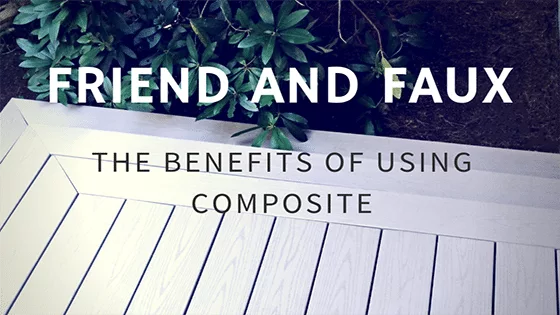What Are The Benefits of Composite Decking?

While pressure-treated lumber isn’t exactly on the way out (it still outstrips any competitors by a large margin), composite decking translates to greater convenience and less maintenance for homeowners. But what is it exactly?
What are the benefits of composite decking?
Composite decking is engineered from wood fiber and plastic, making it denser and easier to clean than traditional wood. First commercially available in the 1990s, composite decking has only grown in popularity during the intervening decades—largely thanks to its flexibility and ease of handling. It looks like wood, but is far more resistant to stains, scuffs, mold, and abuse from the elements. Another benefit is the relative lack of prep work involved when working with composite: it comes ready to install from the manufacturer (some of the major manufactures include Timber Tech, Azek, Fiberon, and Trex). That means no need for sanding, staining, or painting to protect it.
Are composite decks more expensive than wood?
If you’re doing a cost comparison analysis, sure: composite is typically more expensive than lumber. That’s part of the reason lumber has such a hold on the market: it is, at least initially, the most cost-effective option. But when you factor in its durability, composite may save you more in the long run—particularly when you consider how low-maintenance it is compared to true wood. There’s no need for the annual power wash, no need for regular stain applications or wood preservatives, no worries about it rotting, warping, cracking, swelling, and so forth.
Is composite decking really worth it?
The real downside to composite lumber is—well, it isn’t really lumber. It’s not organic, natural wood (though manufacturers do go to great lengths to give composite a grain-like appearance). Some homeowners also find it less aesthetically appealing than lumber, in part because—again—it isn’t real wood. But for homeowners who are looking for an easy deck option, one that requires little upkeep, resists insects, mold, splintering, and the elements, composite is a great option.
Should you have any further questions about composite decking, feel free to get in touch with us. If you’re looking for an expert to help with, you know where to find us.
CHECK OUT
Related Projects
READ OUR
Related Ideas
Locations












